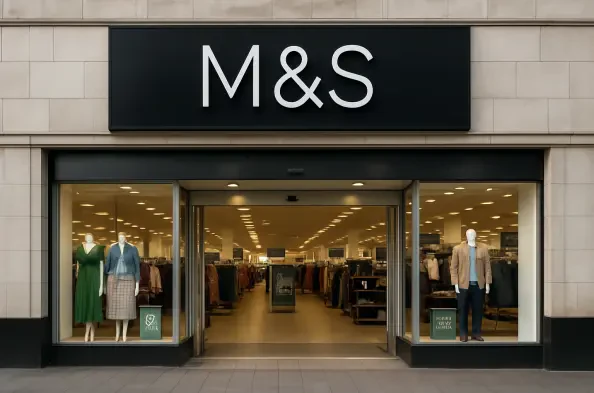Imagine a retail giant with over a century of legacy brought to a standstill by an invisible enemy—a cyber hack that halts online orders and in-store collections for months, leaving customers and stakeholders in dismay. This was the reality for Marks & Spencer (M&S), a British retailer with 141 years of history, when a devastating cyber incident struck on April 22, 2025. The attack disrupted critical services like click and collect, costing millions in lost profit and shaking consumer trust. This roundup delves into diverse perspectives from industry analysts, cybersecurity experts, and retail stakeholders to explore how M&S navigated this crisis, restored its operations, and what lessons other retailers can glean from this high-profile recovery. The aim is to present a comprehensive view of the challenges, strategies, and implications of this event for the retail sector.
Diving into the Cyber Crisis at M&S
Timeline and Initial Disruption
The cyber incident that hit M&S on April 22, 2025, unfolded rapidly, leading to a suspension of online clothing, home delivery, and click and collect services by April 25. Industry observers noted the speed of the shutdown as a sign of the severity of the breach, with systems being taken offline to prevent further damage. This immediate response, while necessary, left customers stranded and unable to access essential services.
The scale of the disruption was unprecedented for a heritage retailer like M&S. Commentators from the retail sector emphasized how this incident exposed the fragility of digital infrastructure, even for established brands. The halt in operations not only impacted sales but also raised questions about the readiness of traditional retailers to combat modern cyber threats.
A range of opinions emerged on the initial fallout, with some analysts pointing out that the suspension highlighted a broader industry vulnerability. They argued that the event served as a wake-up call, urging retailers to reassess their reliance on interconnected systems. This perspective set the stage for a deeper look into how M&S would recover and rebuild trust.
Significance for a Legacy Brand
For a company with a 141-year history, the cyber attack was more than a technical glitch; it was a reputational blow. Retail consultants suggested that the incident underscored a disconnect between M&S’s storied past and the demands of a digital present. Many expressed concern that prolonged downtime could alienate loyal customers in an already competitive market.
Differing views surfaced on the long-term impact of such a crisis. While some industry watchers feared that younger, tech-savvy consumers might turn to rivals, others believed that M&S’s brand strength could weather the storm. This divergence in thought reflects the uncertainty surrounding how heritage retailers can balance tradition with technological resilience.
The consensus among stakeholders was that the crisis offered an opportunity for transformation. Experts in retail strategy highlighted that the path to recovery would need to prioritize not just operational fixes but also a renewed focus on customer communication. This blend of opinions frames the narrative of resilience that M&S would soon embark upon.
Exploring the Path to Restoration
Scale of the Operational Impact
The cyber attack led to a four-month halt in click and collect services, a significant blow to M&S’s operations. Retail analysts pointed out that the extended downtime, coupled with additional systems being taken offline, severely limited the availability of clothing and food in stores. This created a ripple effect, disrupting supply chains and customer expectations alike.
Financially, the toll was staggering, with an estimated loss of £300 million ($404 million) in operating profit for the 2025/26 financial year. Industry commentators varied in their assessment of this figure, with some calling it a catastrophic hit, while others noted that such losses are becoming more common in an era of frequent cyber incidents. The differing takes underline the challenge of quantifying damage beyond immediate numbers.
Competitive dynamics also shifted during this period, as rivals like Next and Sainsbury’s gained market share. Opinions from market analysts suggested that M&S’s temporary absence from the online space allowed competitors to capture frustrated customers. However, a minority view held that brand loyalty might still draw shoppers back once services resumed, sparking debate on consumer behavior post-crisis.
Steps Taken for Service Recovery
M&S adopted a phased approach to restoration, resuming online delivery orders by June 10, 2025, and fully reinstating click and collect services by August 11, as confirmed by Managing Director John Lyttle. Retail operations specialists praised this gradual rollout, arguing that it minimized risks of further breaches while rebuilding system stability. Their view reflects a preference for caution over speed in such recoveries.
The ability to return online orders at any M&S store marked a return to normalcy across fashion, homeware, and beauty categories. Customer experience consultants highlighted this as a critical step in restoring convenience, a key driver of consumer satisfaction. Yet, some cautioned that lingering doubts about security could still deter some shoppers, revealing a split in expert sentiment.
Balancing the pace of recovery with robust security measures was a focal point of discussion. Cybersecurity advisors stressed that rushing reinstatement could expose vulnerabilities, while retail strategists argued for quicker action to retain market presence. This tension between speed and safety illustrates the complex decision-making M&S faced during its comeback.
Financial Strategies and Market Reactions
To offset the massive profit loss, M&S leveraged insurance and cost control measures, mitigating roughly half of the £300 million hit. Financial analysts lauded this approach as a pragmatic buffer, though some questioned whether such measures address underlying systemic issues. Their mixed reactions highlight the challenge of balancing short-term relief with long-term investment.
Market sentiment showed cautious optimism, with M&S shares rising 2% after the click and collect announcement, despite a year-to-date loss of 10%. Stock market observers noted that this uptick reflected investor relief, though others warned that broader UK retail sector confidence remains shaky. These contrasting perspectives shed light on the nuanced recovery narrative.
Analyst opinions, including those from investment firms, leaned toward viewing the incident as a temporary setback. Many expressed belief in M&S’s enduring strengths, suggesting that short-term financial dips do not define long-term value. This positive outlook, though not universal, points to a faith in the retailer’s ability to rebound through strategic focus.
Cybersecurity Challenges in Retail
The attack on M&S, suspected to involve the ransomware group DragonForce as mentioned by Chairman Archie Norman, fits into a wider pattern of cyber threats targeting retailers like Co-op and Harrods. Cybersecurity professionals warned that such groups exploit retail’s vast data troves, with opinions split on whether current defenses are adequate. Some advocated for proactive measures, while others felt reactive strategies dominate.
UK police actions, including the arrest of four individuals in July 2025, sparked discussions on enforcement’s role in deterrence. Law enforcement experts argued that such arrests send a strong signal, yet technology consultants countered that prevention through investment trumps post-incident action. This debate reveals gaps in how cybercrime is addressed at an industry level.
The cascading effects of data theft and operational disruptions on customer trust were a common concern. Retail security analysts emphasized that breaches erode confidence, while consumer behavior researchers suggested transparency during crises can mitigate damage. These varied insights underscore the multifaceted impact of cyber incidents beyond immediate losses.
Key Takeaways from Diverse Perspectives
Synthesizing the views of analysts and experts, the importance of a phased restoration stands out as a critical lesson from M&S’s journey. Retail recovery specialists noted that gradual reinstatement, as seen with click and collect resuming by August 2025, helps manage risks effectively. Meanwhile, financial advisors pointed to insurance as a vital tool in softening the £300 million blow, offering a practical takeaway for other firms.
Actionable insights for retailers emerged from the roundup, with cybersecurity consultants urging the adoption of robust frameworks to preempt attacks. Retail leaders also highlighted the need for contingency plans to maintain operations during crises. These recommendations reflect a consensus on preparedness as a cornerstone of resilience in the face of digital threats.
For business leaders and consumers alike, staying informed is key. Industry voices suggested that companies should prioritize transparent communication post-incident, while shoppers can benefit from understanding retailer security practices. This dual focus on corporate responsibility and consumer awareness ties together the practical lessons drawn from this high-stakes recovery.
Reflecting on the Road Ahead for Retail Security
Looking back, the journey of M&S through a major cyber hack in 2025 revealed both vulnerabilities and strengths within the retail sector. The diverse opinions gathered showed a retailer grappling with unprecedented challenges, yet ultimately restoring click and collect services as a symbol of regained stability. The financial and operational hurdles were met with strategic responses that varied in perception among experts.
Moving forward, retailers must consider bolstering cybersecurity investments as a non-negotiable priority to prevent similar disruptions. Exploring partnerships with tech firms for advanced threat detection could be a next step, alongside fostering industry-wide collaboration to share best practices. These actionable considerations aim to fortify defenses in an evolving threat landscape.
Beyond immediate fixes, the broader implication lies in redefining consumer trust in a digital age. Retailers might benefit from initiating public education campaigns on data security, ensuring customers feel empowered rather than exposed. This forward-thinking approach, inspired by the insights of this roundup, offers a pathway to not just recover, but to thrive amid ongoing cyber risks.






